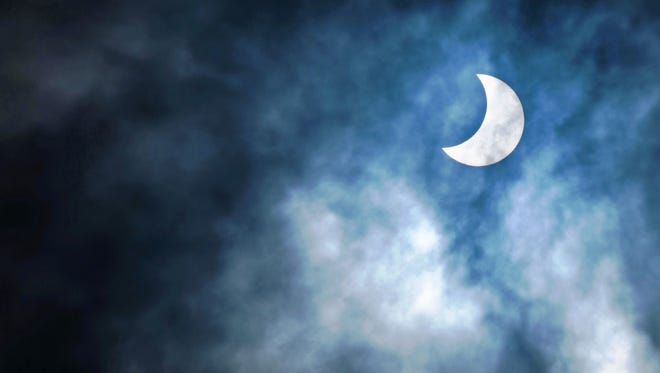Where could clouds ruin your view of the solar eclipse?
 Doyle Rice
Doyle Rice
You've got your eclipse glasses, and you've taken the day off. You're prepared for the solar eclipse Aug. 21, but there's one thing that's hard to plan for: the weather.
A realistic weather forecast won't be available until a few days before the historic sky spectacle, but meteorologists can offer a reasonable guide to where clouds are least, and most, likely that day based on weather records.
The total eclipse will be visible from coast to coast, all the way from Oregon to South Carolina. It will be the first total eclipse visible only in the USA since the country's founding in 1776.

The best advice for people looking for clear skies: "Go West (but not too far West), young man."
Folks in Idaho, Wyoming and Nebraska will have the best chance of sunny skies, based on historical weather conditions from the National Oceanic and Atmospheric Administration.
More eclipse coverage:
How can you safely view the eclipse? And 36 other questions, answered
School's out for the eclipse: Why class is canceled for many in the South on Aug. 21
Street lights could hinder eclipse for some viewers
Casper, Wyo., has an 88% chance of clear skies on Aug. 21 — the highest percentage of any U.S. city.
Other historically sunny locations include Lincoln, Neb., (77% chance of clear skies) and Carbondale, Ill. (80%).

Both the Pacific and Atlantic coasts could see cloudy conditions. Increased cloud cover will be possible as the eclipse travels east of the Mississippi River, NOAA said.
Areas that experience higher humidity, such as coastal Oregon and the Southeast, are more likely to experience cloudy conditions, according to NOAA.
Afternoon thunderstorms are a concern and help explain the lower chances of clear skies in the eastern half of the country since the eclipse will pass through during early to midafternoon, NOAA said.

Both Nashville and Columbia, S.C., have a 44% chance of clear skies. At 53%, it's pretty much a toss-up in Charleston, S.C.
Even if you're not in the path of the total eclipse, everyone in the 50 states will be able to see at least a partial eclipse — depending on the weather.
Ultimately, NOAA said, the cloudiness calculations are based on past observations, which are no guarantee of future outcomes.
"Even the driest places on Earth experience clouds, fog and rain," warned Brady Phillips of NOAA’s Office of Communication.